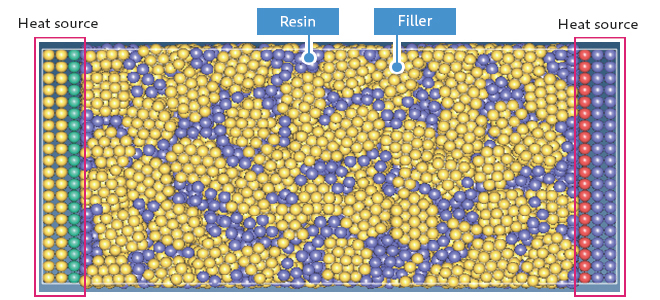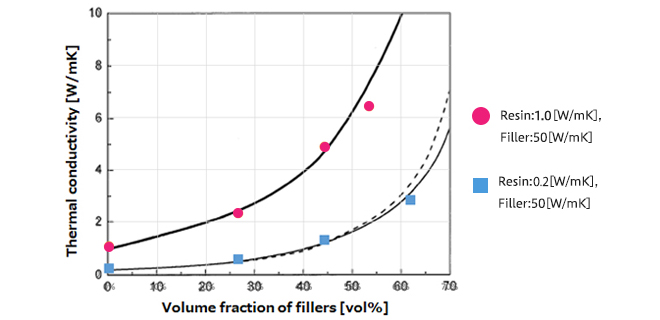Thermal conductivity calculations for filler resin composites
The particle method engine VSOP-PS was used to analyze the thermal conductivity of filler-resin composites. The relationship between filler volume fraction in high-density packing structures and effective thermal conductivity was evaluated, showing good agreement with Bruggeman’s approximation formula. This is useful for material selection in thermal design of electronic devices.
Use Cases Highlights
- Thermal conductivity calculation using the particle method
- Analysis of the effect of volume fraction on thermal properties
Thermal conductivity calculation using the particle method
A structural model densely packed with filler and resin particles is shown. Heat source layers are placed at both ends, with filler and resin in between. Fillers consist of bonded particles, while resin is represented by single particles. Effective thermal conductivity is calculated from Fourier’s law using temperature gradients and particle layer thickness.

High-density packing structure
Analysis of the effect of volume fraction on thermal properties
A graph showing the relationship between filler volume fraction and effective thermal conductivity is presented. The calculation results using the particle method (VSOP-PS) show good agreement with Bruggeman’s approximation, confirming the validity of the model. The computation time per point is about 30 minutes, with approximately 20,000 particles.

Relationship between filler volume fraction and effective thermal conductivity
Reference
[1] Journal of the Society of Inorganic Materials, Japan 14, 429-436 (2007)
Details of analysis
Inquiries Regarding Products
Have questions about product implementation? Contact us today.





